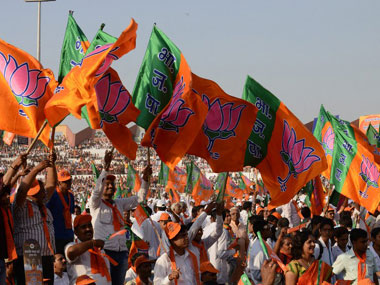For the Bhartiya Janata Party (BJP), 2016 is a landmark year in Kerala politics. Amid the Left wave that swept through the state, the lone lotus bloomed in Nemam, a suburb of the state’s capital, marked the first victory for the party in Kerala Assembly elections.
As O Rajagopal, BJP’s sole winning candidate put it, the party no longer needs to take a visitor’s pass to enter the state assembly and sit in the visitor’s gallery as once ridiculed by Congress leader from the state, A K Antony.
But Rajagopal, 86, who is more familiar to poll defeats than success in his political life, is a consolation prize for the party in an election, where the party fielded Prime Minister Narendra Modi to spearhead its campaign and roped in the Hindu Ezhavas under the Hindutva umbrella. One could also argue that Rajagopal’s victory is more on account of his acceptability among voters in Nemam, rather than BJP’s growth.
Beyond that, the question is has the party succeeded in making strong inroads to the bipolar political landscape of the state?
Take a look at the numbers. BJP’s vote share in this election, 10.5 percent, has risen as compared with the 6 per cent in 2011 assembly elections, but has remained flat when compared with the 10.2 percent it scored in 2014 Lok Sabha polls. Seen together with its ambitious ally, Bhartiya Dharma Jana Sena (BDJS), the vote share is about 14 percent as compared with 16 percent the alliance clocked in local body polls last year. The BDJS contested in 37 seats and garnered 3.9 percent total vote share while BJP finished with 10.5 percent.
At this stage, that’s hardly any progress considering the huge clout of Hindu Ezhavas in central Kerala (Alappuzha, Kollam districts where the BJP-BDJS combine didn’t live upto the expectations) whose support BDJS chief, Vellappalli Natesan claims to enjoy.
Easy win for LDF
As noted in an earlier article, the LDF’s victory is a gift by the Congress-led UDF government that has spent most of its five-year term excelling in the art of embracing scams ranging from Solar Saritha to bar bribery to flip-flops on liquor policies, with no major development progress to show. There was a strong anti-incumbency wave.
Also, the government’s inability to act on time in the Jisha murder case too added to an anti-incumbency wave in the state. There are reasons to believe that a large chunk of the Hindu Ezhava votes have gone to the LDF in the pro-Left wave. This, along with a drift in the minority votes, enabled LDF to score 91 seats in the 140 seat assembly leaving UDF with only 48 seats.
But, the bigger points to note here are these.
Even though, BJP alone has not made a big progress in this round of polls, the BJP-BDJS combine has managed to retain most of its vote share it scored in local body polls (just above 14 percent vs 16 percent). This proves that the gain in vote share in November last year was no one-time wonder. If things turn favourable, this combination can emerge as a major challenge for both fronts and more to the UDF in future.
Prior to the BDJS tie up, the BJP, in Kerala has so far remained largely as a party of upper caste Hindus. It is changing that image by embracing Ezhavas (considered to be socially backward). That has the design of a third front emerging in the southern most state to challenge the bipolar politics began in 1970s.
Second, the BJP-BDJS alliance has evidently forced a triangular contest in many constituencies, which used to be LDF vs UDF battle scenes earlier. As this report says , in Kodungalloor, the NDA won a little over 6,000 votes in the last assembly polls, but the BDJS nominee polled over 32,000 votes. Elsewhere, in Kuttanad in Alappuzha district, while the BJP candidate had won over 4,000 votes in 2011, the BDJS nominee finished with 33,000 plus votes this time. UDF has evidently lost its votes in both these places and Left candidates have gained. Past evidence shows that caste-centric politics has hardly worked in Kerala beyond certain pockets. The fact that the BDJS has managed to make impacts shows BJP’s Hinduvta focused strategy is working slowly.
Third, evidently, in the context of BJP’s emergence, the united minorities in the state have favoured the Left more than the UDF. The state has key minorities — Christian and Muslim — constituting 45 percent of the state. Of this, Muslims are the bigger chunk making up 26.56 percent of the population. Traditionally, this community has put its support behind the UDF ally, the Indian Muslim League (IML) but this time, there are reasons to believe that the BJP’s emergence has united the minorities and this benefited the Left than the UDF. Political analysts agree that, over the years, there has been a trend of LDF widening its hold in traditional IML strongholds in Malabar.
BJP’s election gain is also due to the fact that it has consolidated the NDA’s position in Kerala with high-profile campaigns by PM Narendra Modi and other central leaders and promise of change from the bipolar politics of the state. Modi’s comparison of the state’s Scheduled Tribes with Somalians, which created a massive social media wave against Modi and the BJP in the run up to the elections, doesn’t seem to have caused much impact in the elections.
One needs to watch how the BJP- BDJS alliance grows from here. If BJP needs to morph itself into a mass political outfit in Kerala, it shouldn’t confine within the Hindutva banner and focus on more secular, development-focused approach.
But the big takeaway from the polls is this. The NDA is no longer a non-factor in Kerala’s political scene dominated by left parties and Congress. An influential third-front is taking shape and Congress-party is its first casualty.


)




)
)
)
)
)
)